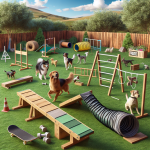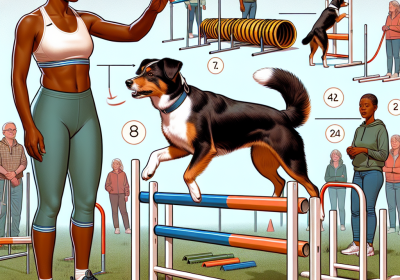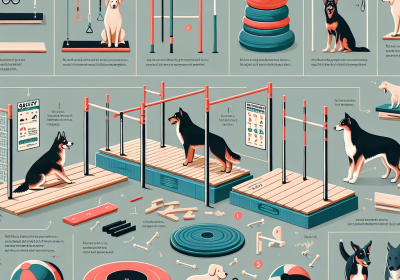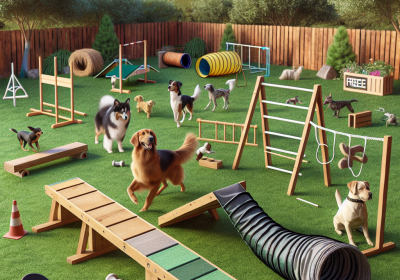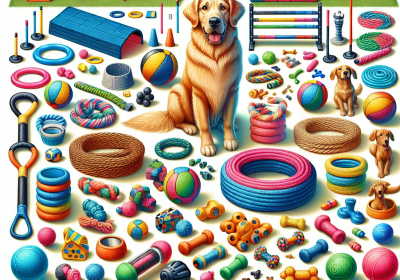Essential Equipment for Canine Freework
Table of Contents
- Top 5 Must-Have Tools for Canine Freework
- Essential Safety Gear for Canine Freework Enthusiasts
- Innovative Equipment to Enhance Your Canine Freework Sessions
Canine freework is an engaging and enriching activity that allows dogs to explore their environment, utilize their natural instincts, and develop confidence through a variety of sensory experiences. To ensure a safe and effective freework session, it is crucial to have the right equipment. Essential equipment for canine freework includes a secure harness and long line to provide freedom of movement while maintaining control, a variety of textured surfaces and objects to stimulate the dog’s senses, interactive toys and puzzles to challenge their problem-solving skills, and treats or rewards to reinforce positive behavior. Additionally, having a safe and enclosed area for freework activities is important to prevent any potential hazards. By equipping yourself with these essential tools, you can create a stimulating and enjoyable freework experience for your canine companion.
Top 5 Must-Have Tools for Canine Freework
Canine freework, an innovative approach to dog training, emphasizes the importance of allowing dogs to explore their environment freely, thereby enhancing their physical and mental well-being. To ensure a successful and enriching experience, it is crucial to equip oneself with the right tools. The following are the top five must-have tools for canine freework, each playing a pivotal role in facilitating a productive and enjoyable session.
First and foremost, a sturdy and comfortable harness is indispensable. Unlike traditional collars, harnesses distribute pressure evenly across a dog’s body, reducing the risk of injury and providing greater control. When selecting a harness, it is essential to consider the dog’s size, breed, and specific needs. A well-fitted harness not only ensures the dog’s safety but also allows for a full range of motion, which is vital for freework activities. Additionally, harnesses with reflective strips can enhance visibility during early morning or late evening sessions, further ensuring the dog’s safety.
Transitioning from harnesses, the next essential tool is a long training lead. These leads, typically ranging from 10 to 30 feet, offer dogs the freedom to explore their surroundings while still under the handler’s supervision. The extended length allows for a more natural exploration experience, enabling dogs to engage with their environment without feeling restricted. It is advisable to choose a lead made of durable material, such as nylon or biothane, to withstand the wear and tear of outdoor activities. Moreover, a lead with a comfortable handle can prevent hand strain during prolonged sessions.
In addition to harnesses and leads, interactive toys are a crucial component of canine freework. These toys, designed to stimulate a dog’s mind and body, can include puzzle toys, treat-dispensing toys, and sensory toys. Puzzle toys challenge a dog’s problem-solving skills, while treat-dispensing toys provide a rewarding experience that encourages exploration. Sensory toys, which may include different textures, sounds, and scents, cater to a dog’s natural curiosity and enhance their sensory perception. Incorporating a variety of interactive toys into freework sessions can keep dogs engaged and mentally stimulated.
Furthermore, portable agility equipment can significantly enhance the freework experience. Items such as collapsible tunnels, weave poles, and jump sets can be easily transported and set up in various environments. These tools not only provide physical exercise but also improve a dog’s coordination, balance, and confidence. When introducing agility equipment, it is important to start with simple obstacles and gradually increase the complexity as the dog becomes more comfortable and proficient. This progressive approach ensures that the dog remains motivated and avoids any potential frustration.
Lastly, a reliable treat pouch is an invaluable tool for any canine freework session. Treats serve as positive reinforcement, encouraging desired behaviors and facilitating training. A treat pouch allows for easy access to rewards, ensuring that the handler can promptly reinforce good behavior. When selecting a treat pouch, it is beneficial to choose one with multiple compartments, enabling the handler to carry a variety of treats. Additionally, a pouch with a secure closure can prevent treats from spilling during active sessions.
In conclusion, the right equipment can significantly enhance the effectiveness and enjoyment of canine freework. A sturdy harness, a long training lead, interactive toys, portable agility equipment, and a reliable treat pouch are all essential tools that contribute to a successful freework experience. By investing in these tools, handlers can create a safe, stimulating, and rewarding environment for their dogs, ultimately fostering a stronger bond and promoting overall well-being.
Essential Safety Gear for Canine Freework Enthusiasts
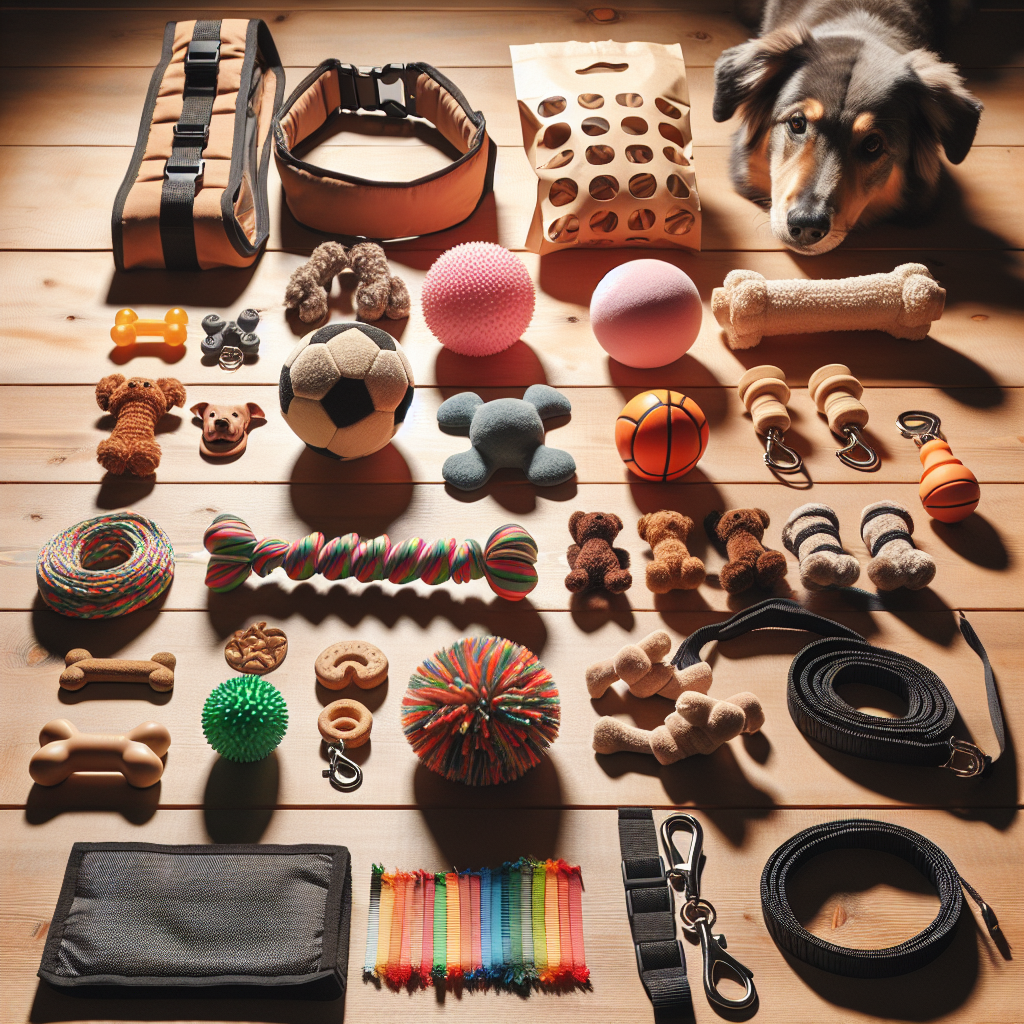
Canine freework, an engaging and stimulating activity for dogs, requires careful consideration of safety to ensure a positive experience for both the dog and the handler. Essential safety gear is paramount in mitigating risks and enhancing the overall enjoyment of this activity. To begin with, a well-fitted harness is indispensable. Unlike collars, harnesses distribute pressure evenly across a dog’s body, reducing the risk of injury to the neck and spine. When selecting a harness, it is crucial to choose one that is adjustable and made from durable materials to withstand the rigors of freework. Additionally, reflective or brightly colored harnesses can enhance visibility, especially in low-light conditions, thereby preventing accidents.
Transitioning to another critical piece of equipment, a sturdy leash is essential for maintaining control over the dog. While freework often involves off-leash activities, there are situations where a leash is necessary, such as in unfamiliar environments or around other animals. A leash made from strong, high-quality materials ensures that it will not snap under pressure. Moreover, a leash with a comfortable handle can prevent hand strain during prolonged use. For added safety, a leash with reflective stitching can be beneficial for evening or early morning sessions.
In addition to harnesses and leashes, protective footwear for dogs can be a valuable investment. Canine freework often takes place in diverse terrains, ranging from rocky paths to muddy trails. Dog boots can protect a dog’s paws from sharp objects, extreme temperatures, and rough surfaces. When selecting boots, it is important to ensure they fit snugly yet comfortably, allowing the dog to move naturally. Boots with non-slip soles can provide additional traction, preventing slips and falls.
Furthermore, hydration is a critical aspect of canine freework, particularly during warmer months. A portable water bottle and collapsible bowl can ensure that a dog remains hydrated throughout the activity. Dehydration can lead to serious health issues, so it is essential to take regular breaks and offer water frequently. Additionally, carrying a small first aid kit can be prudent. This kit should include items such as antiseptic wipes, bandages, and tweezers to address minor injuries promptly.
Another important consideration is the use of identification tags and microchips. In the event that a dog becomes separated from its handler, identification tags with up-to-date contact information can facilitate a swift reunion. Microchipping provides an additional layer of security, as it allows for permanent identification that cannot be lost or removed. Ensuring that the microchip information is current is equally important.
Moreover, for those engaging in freework in areas with wildlife or other potential hazards, a GPS tracker can be an invaluable tool. These devices can be attached to a dog’s collar or harness and provide real-time location tracking. This technology can offer peace of mind, knowing that a dog’s whereabouts can be monitored at all times.
Lastly, it is essential to consider the handler’s safety as well. Wearing appropriate footwear and clothing can prevent injuries and ensure comfort during freework sessions. Additionally, carrying a whistle or other signaling device can be useful in case of emergencies.
In conclusion, the safety of both the dog and the handler is paramount in canine freework. By investing in essential safety gear such as harnesses, leashes, protective footwear, hydration supplies, identification tags, GPS trackers, and first aid kits, enthusiasts can ensure a safe and enjoyable experience. Taking these precautions not only enhances the well-being of the dog but also fosters a positive and rewarding freework environment.
Innovative Equipment to Enhance Your Canine Freework Sessions
Canine freework, an innovative approach to dog training and enrichment, emphasizes the importance of allowing dogs to explore their environment freely, thereby enhancing their physical and mental well-being. To maximize the benefits of these sessions, it is crucial to equip oneself with the right tools and equipment. This article delves into the essential equipment that can significantly enhance your canine freework sessions, ensuring a more enriching experience for your furry companion.
To begin with, a sturdy and comfortable harness is indispensable. Unlike traditional collars, harnesses distribute pressure evenly across a dog’s body, reducing the risk of injury and providing better control. When selecting a harness, opt for one that is adjustable and padded to ensure maximum comfort. Additionally, reflective strips can be a valuable feature for those who engage in freework during early mornings or late evenings, enhancing visibility and safety.
Transitioning from harnesses, the next essential piece of equipment is a long line or leash. A long line, typically ranging from 10 to 30 feet, allows dogs to explore their surroundings more freely while still under control. This is particularly beneficial in open spaces where dogs can roam without the risk of running off. It is advisable to choose a long line made of durable material, such as nylon or biothane, which can withstand the wear and tear of outdoor activities.
In addition to harnesses and long lines, interactive toys play a pivotal role in canine freework. These toys stimulate a dog’s natural instincts, such as hunting, foraging, and problem-solving. Puzzle toys, for instance, challenge dogs to think critically and work for their rewards, thereby providing mental stimulation. Similarly, treat-dispensing toys can keep dogs engaged for extended periods, making them an excellent addition to any freework session.
Moreover, scent work equipment can significantly enhance the sensory experience for dogs. Scent work, or nose work, involves training dogs to identify and locate specific scents. This activity taps into a dog’s natural olfactory abilities, providing both mental and physical stimulation. Scent work kits, which typically include essential oils and scent containers, can be used to create various scent trails and challenges. This not only keeps dogs engaged but also helps build their confidence and problem-solving skills.
Furthermore, agility equipment can add a dynamic element to canine freework sessions. Items such as tunnels, weave poles, and jumps encourage dogs to navigate obstacles, promoting physical fitness and coordination. Agility equipment can be set up in various configurations, allowing for endless possibilities and keeping sessions exciting and varied. It is important to ensure that the equipment is safe and appropriate for your dog’s size and skill level to prevent injuries.
Lastly, a portable water bowl and a supply of fresh water are essential, especially during longer freework sessions. Hydration is crucial for maintaining a dog’s health and energy levels. Portable water bowls are convenient and can be easily carried in a backpack or attached to a belt. Ensuring that your dog has access to water throughout the session will help prevent dehydration and overheating.
In conclusion, equipping yourself with the right tools can significantly enhance your canine freework sessions, providing a more enriching and enjoyable experience for your dog. From harnesses and long lines to interactive toys and scent work kits, each piece of equipment plays a vital role in promoting your dog’s physical and mental well-being. By investing in these essential items, you can create a safe, stimulating, and rewarding environment for your furry companion.
Read more about Canine Freework
Equipment Needed for Canine Freework
– Essential Equipment for Canine Freework
– DIY Canine Freework Equipment
– Safety Measures for Canine Freework Equipment
– Different Brands and Options for Canine Freework Equipment
– How to Properly Use Canine Freework Equipment



